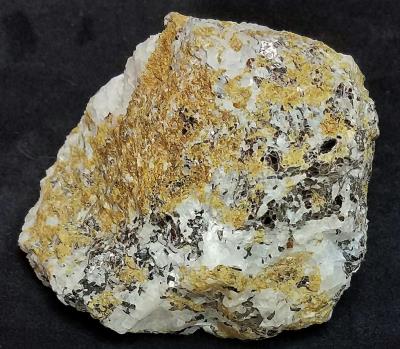 |
Vesuvianite (yellow tan), with calcite (white), and hendricksite mica (shiny black), from Franklin, New Jersey. From the collection of and photo by Ken Reynolds.
|
|
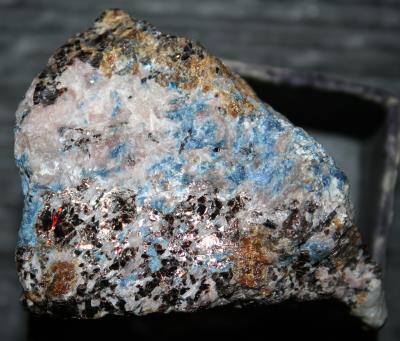 |
Vesuvianite variety Cyprine (blue), with willemite, calcite, and hendricksite mica (shiny black), from Franklin, New Jersey. From the collection of and photo by JVF.
|
|
 | | 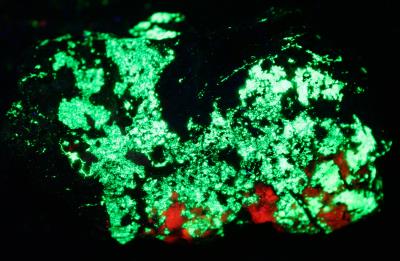 |
Vesuvianite variety cyprine (blue), willemite, franklinite, andradite (light brown), and hendricksite mica (shiny black). Photo by JVF.
| | Vesuvianite variety cyprine, thoroughly mixed with willemite under shortwave UV light, giving the appearance of "blue willemite". Cyprine is non-fluorescent. The calcite fluoresces red and the willemite green. Photo by JVF. |
|
 | | 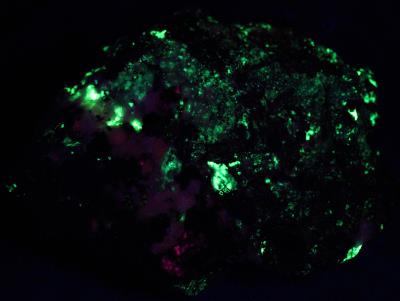 |
Vesuvianite variety cyprine (blue), willemite (light green and white), calcite (white), hendricksite mica (shiny black) and andradite garnet (brown) from Franklin, NJ. 6" x 4 1/2". From the collection of Gerry McLoughlin, photo by WP.
| | Vesuvianite variety cyprine, willemite, calcite, hendricksite mica and andradite garnet from Franklin, NJ under longwave UV light. The willemite fluoresces green and the calcite dark red, the cyprine, mica and garnet are non-fluorescent. 6" x 4 1/2". From the collection of Gerry McLoughlin, photo by WP. |
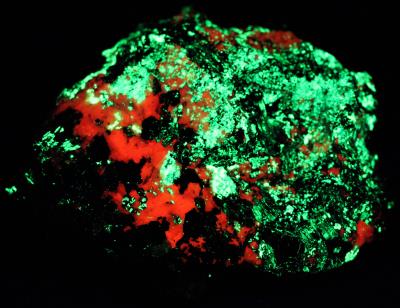 |
Vesuvianite variety cyprine, willemite, calcite, hendricksite mica and andradite garnet from Franklin, NJ under shortwave UV light. The willemite fluoresces green and the calcite orange red, the cyprine, mica and garnet are non-fluorescent. The blue cyprine includes exsolution willemite and appears to fluoresce green. 6" x 4 1/2". From the collection of Gerry McLoughlin, photo by WP.
|
|
